As an Amazon Associate I earn from qualifying purchases.
Preparing Your Grill for Safe Barbecuing
Before we fire up our barbecues for the perfect summer cookout, it’s crucial to ensure that our trusty grills are in tip-top shape. After all, we don’t want any mishaps ruining the fun. Let’s go over some essential BBQ safety tips to avoid common grilling dangers.
Inspecting your BBQ equipment: What to look for
First things first, let’s give our grilling equipment a thorough inspection. Check for cracks on the hoses of gas grills, rust, or other wear and tear on charcoal grills. Be sure to examine the burners, knobs, and ignition system to ensure they are functioning correctly. If something seems off, don’t risk it. Better to invest in a new grill or replacement parts than to encounter potential hazards.
Properly clean and maintain your grill
We all know that a clean grill is a happy grill. Keep it clean by removing grease and debris after each use. For gas grills, we recommend using a stiff wire brush and some mild soap to scrub those grates. For charcoal grills, a grate cleaner or scraper will do the trick. By regularly cleaning your grill, you’ll prevent residue buildup, which can lead to flare-ups and even fires.
Location matters: Ensuring a safe grilling area
Think twice before firing up your grill right next to your house – we don’t want to accidentally set anything ablaze. Keep your grill at least 10 feet away from your home or any other structures, such as sheds, fences, or overhangs. Avoid grilling on wooden decks or beneath trees, as these can be potential fire hazards. And remember, please never use your grill indoors, even in a garage with the door open, as this can cause dangerous carbon monoxide buildup.
The importance of ventilation for gas grills
Speaking of carbon monoxide, it’s essential to ensure proper ventilation when using a gas grill. The buildup of this deadly gas can be harmful to you and your guests. Always keep your grill in an open, well-ventilated area where fresh air can circulate. We know it’s tempting to keep the grill close during those rainy days, but trust us, adequate ventilation is a must!
Checking for gas leaks on propane grills
Now let’s talk about propane grills and gas leaks prevention. Before you start grilling, mix some mild soap with water, and brush it over the hoses and connections. Turn on the propane tank, and if you see any bubbles forming on the soapy spots, you’ve got a gas leak. Time to replace those hoses or connections before grilling. Also, make sure to turn off the propane tank and grill whenever you’re done cooking – we wouldn’t want any surprises the next time we fire up the grill.
By following these tips and treating our grills with care, we’ll be all set to barbecue safely and deliciously all season long. Happy grilling!
Choosing the Right BBQ Tools and Accessories
Grilling tools essentials for safe cooking
Let’s face it, we all love a good BBQ. But before getting our grill on, it’s essential to have the right tools to ensure our safety while grilling. Firstly, having a good pair of tongs will make flipping and handling food a breeze, while preventing burns from direct contact with the grill. Next, a reliable spatula will help avoid food breakage or dropping. A heat-resistant basting brush is also a must for applying sauces and oils without the risk of burning our fingers. And let’s not forget a sturdy grill fork to help move, turn, and serve our delicious BBQ creations.
Using heat-resistant gloves and aprons
When it comes to safety, a little preparation goes a long way. That’s where a trusty pair of heat-resistant gloves and an apron can make a world of difference. Not only will gloves protect our hands from the intense heat, but they’ll also provide extra grip when handling food on the grill. Moreover, using an apron is not just a fashion statement— it’s a practical way to shield our clothes from splatters and spills, saving us from a potential wardrobe disaster.
Selecting the appropriate fuel for your grill
“A journey of a thousand miles begins with a single step,” they say, and when it comes to grilling, our journey begins with the right fuel. Depending on our grill type, the two primary options are propane and charcoal. Choosing the wrong fuel can potentially create hazardous situations. Be sure to check our grill’s user manual for recommendations on the correct fuel type, and also familiarize ourselves with the proper techniques for safely lighting and controlling the flame.
Why you should invest in a grill thermometer
“They say perfection is the enemy of the good… but when it comes to grilling, the enemy of perfection is undercooked food!” That’s why a reliable grill thermometer is crucial. Not only does it help us ensure consistent and accurate cooking temperatures, but it can also protect us from food-borne illnesses caused by undercooked meat. Oh, and let’s not forget how it can save us from the embarrassment of serving up overly charred or raw eats to our family and friends!
Using a grill brush to keep surfaces clean
Ever heard the saying “Cleanliness is next to godliness”? Well, when it comes to BBQ safety, cleanliness is next to, well… safety! A clean grill minimizes the chances of flare-ups, which can cause serious burns or damage. Therefore, it’s important to invest in a good-quality grill brush to clean the surface of our grill before and after each use. Remember, the sooner we clean our grill, the better – as grease and debris become harder to remove over time. So, let’s get scrubbing and make our BBQ experience both enjoyable and hazard-free!
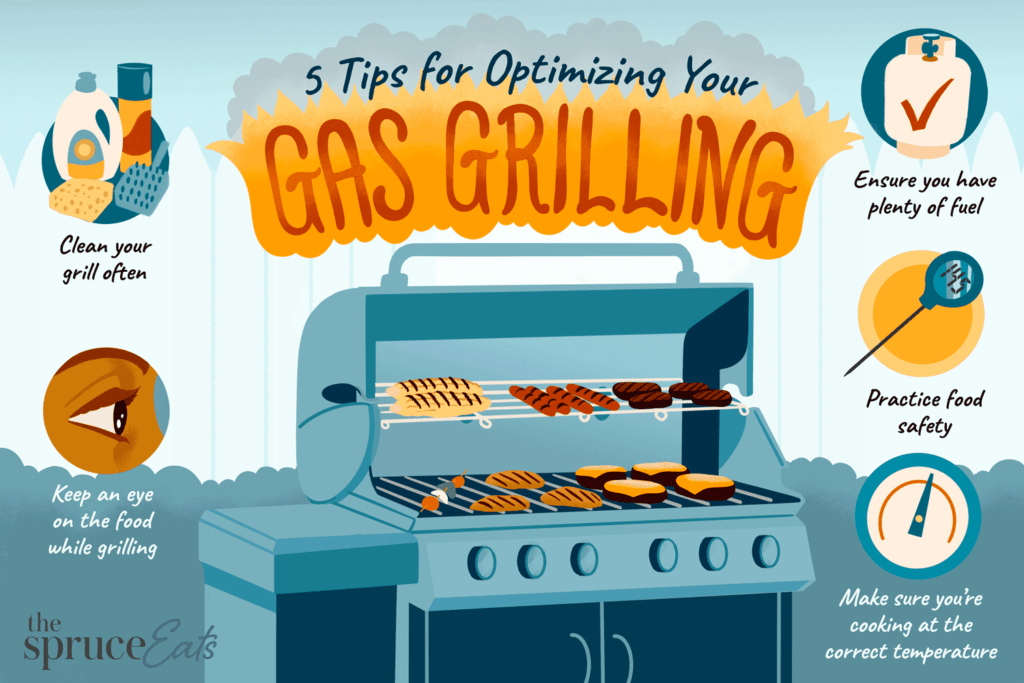
Proper Grill Lighting Techniques
In this section, we’re going to cover the essential techniques for lighting your BBQ grill safely, avoiding dangerous mistakes, and setting the right heat. So, without further ado, let’s dive right into it!
Lighting charcoal grills safely
Charcoal grilling might be a favorite pastime for many, but if done incorrectly, it can lead to accidents or even fires. Here are a few tips for lighting your charcoal grill safely:
Keep it clean: Make sure there’s no leftover debris or ash from previous grilling sessions. This helps ensure proper airflow and reduces the risk of flare-ups.
Don’t overload with charcoal: Less is more! Too much charcoal can lead to excessive heat and uneven cooking.
Use a chimney starter: This nifty tool makes it easy to start your charcoal without needing lighter fluid. Simply fill the chimney with charcoal, place it over a lighter cube or newspaper, and light it up. After around 20 minutes, your coals should be ready to go.
Avoid lighter fluid: Lighter fluid can be dangerous, and its fumes can give your food an unwanted chemical flavor. Stick to a chimney starter or other safer alternatives, like paraffin lighter cubes.
Starting your gas grill the correct way
Gas grills are convenient and easy to use, but it’s crucial to follow proper safety procedures when lighting them:
Inspect before use: Check your propane tank, hose, and connections for any signs of wear or damage before firing up the grill.
Open the lid: Always make sure the grill lid is open when lighting to prevent a buildup of gas, which could lead to a dangerous explosion.
Turn on the gas: Slowly open the propane tank valve.
Ignite the grill: Turn the burner control knob to “light” or “ignite,” then press the ignition button. If your grill doesn’t have an ignition button, use a long match or BBQ lighter.
Watch for flames: Ensure the burners are lit and producing even flames. If the flames aren’t consistent, turn off the gas and investigate the issue before relighting.
Avoiding dangerous grill lighting mistakes
Here are some common mistakes to avoid when lighting your BBQ grill:
Never use gasoline: Gasoline is highly flammable and should never be used to fuel your grill. Stick to charcoal or propane, depending on your grill type.
Don’t light the grill indoors: Grills produce carbon monoxide, so they should always be used outdoors in a well-ventilated area.
Give it some space: Ensure your grill is at least 10 feet away from any structures, overhangs, or combustible materials.
Never leave the grill unattended: Stay close to the grill until it’s completely cool after use.
When to use BBQ grill lighting tools
To make your grill lighting experience safer and more efficient, consider using the following tools:
Chimney starter: As mentioned earlier, a chimney starter is a safe and easy way to light charcoal grills without lighter fluid.
Long matches or BBQ lighter: These help you ignite your grill from a safe distance, making it less likely to burn yourself.
Grill brush: Keeping your grill grates clean is essential for safe and even cooking. Use a grill brush to remove debris and stuck-on food before and after each use.
Tips for setting the right heat on your grill
Getting the right heat on your grill is crucial for cooking your food to perfection. Here are some tips for setting the right heat:
Use a grill thermometer: Many grills come with built-in thermometers, but if yours doesn’t have one, we recommend investing in a good-quality probe thermometer.
Learn your grill’s hot spots: Every grill has its quirks! Spend some time getting to know your grill and identifying any hot or cold spots by checking the temperature with a thermometer.
Adjust the heat as needed: For gas grills, use the control knobs to adjust the flame. For charcoal grills, adjust the vents to control airflow and temperature.
By following these simple tips and techniques, you’ll be well on your way to safe and enjoyable grilling experiences. Happy BBQing!
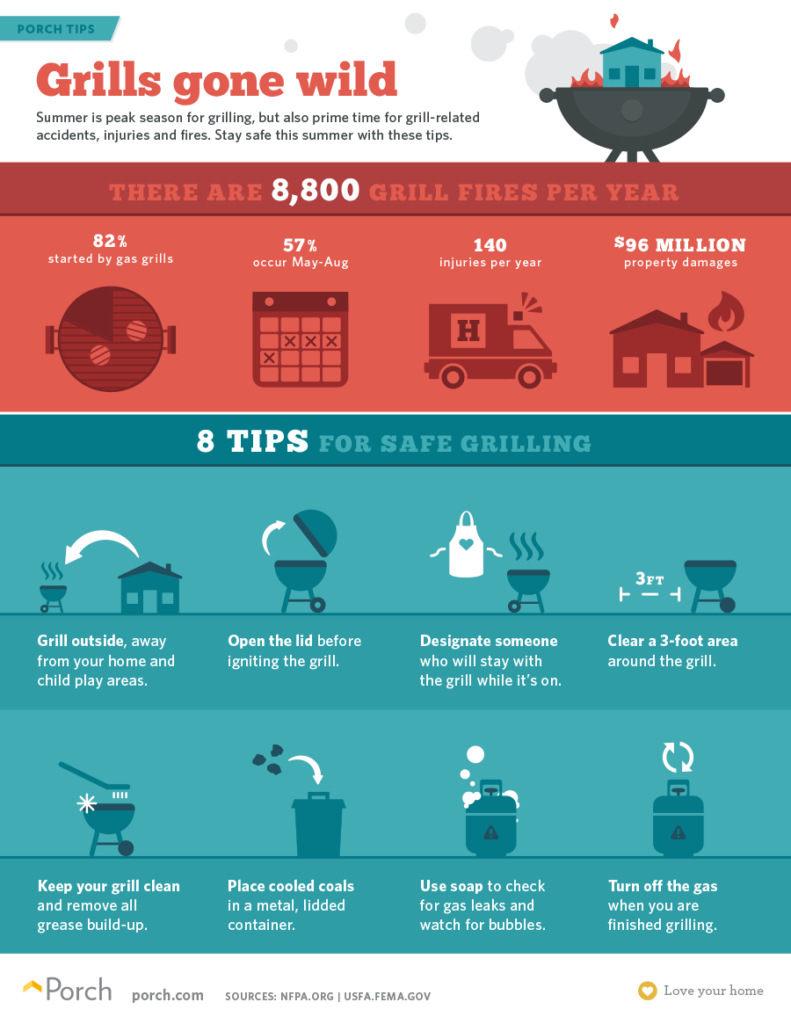
Safe Food Handling and Preparation
While we all love a good barbecue, it’s crucial to remember that proper food handling and preparation can make all the difference between a fun grilling experience and a memorable feast for the wrong reasons. In this section, we’ll cover essential BBQ safety tips, so you can avoid common grilling dangers and serve up delicious meals safely.
Separating Raw and Cooked Food
First things first – let’s talk about cross-contamination. This happens when bacteria from raw food, such as meat and poultry, transfer to other foods, surfaces, or utensils. To avoid this, always keep raw food separate from cooked or ready-to-eat food. For example, when grilling, use separate plates or trays for raw and cooked items. And don’t forget to wash your hands thoroughly after handling raw meat!
Proper Meat Storage to Avoid Cross-Contamination
When storing raw meat in the fridge or cooler, make sure it’s securely wrapped to prevent leaking. Place it on the lowest shelf, or use a dedicated meat drawer if possible, so it won’t drip onto other foods. Also, be mindful of expiration dates and always keep perishable food items in a cooler with plenty of ice or cold packs to maintain a safe temperature.
Using Separate Cutting Boards and Utensils
Oh, the tangled web we weave when we mix our tools! It’s essential to use separate cutting boards, knives, and other utensils for raw meat and cooked or ready-to-eat foods like veggies, fruits, or even cooked meat. Color-coded cutting boards can be helpful in keeping things organized and avoiding cross-contamination while preparing your grub. And, as always, wash your hands and utensils thoroughly after handling raw meat.
Ensuring Proper Cooking Temperatures
As scrumptious as the sizzle may sound, don’t let that fool you. The only way to ensure that the meat is cooked to a safe temperature is by using a food thermometer. It’s a handy little gadget that helps prevent undercooking or overcooking, and it’ll be a lifesaver in making sure the harmful bacteria are killed. Plus, you’ll avoid serving up dry or overdone food, which is always a bonus!
Checking the Internal Temperature of Meat
Now comes the (literal) meat and potatoes of the matter. When checking the internal temperature of the meat, make sure to insert the food thermometer into the thickest part, and if you’re grilling poultry, avoid touching the bone. Here’s a quick rundown of the minimum internal temperature you should aim for in different types of meat:
- Poultry (chicken, turkey, duck): 165°F (74°C)
- Ground meats (beef, pork, lamb): 160°F (71°C)
- Beef, pork, lamb, and veal (steaks, chops, roasts): 145°F (63°C) and allow to rest for 3 minutes before serving
So there you have it, folks! Keep these BBQ safety tips in mind to ensure safe food handling and preparation, and you’ll be well on your way to a fantastic grilling season. Happy barbecuing!
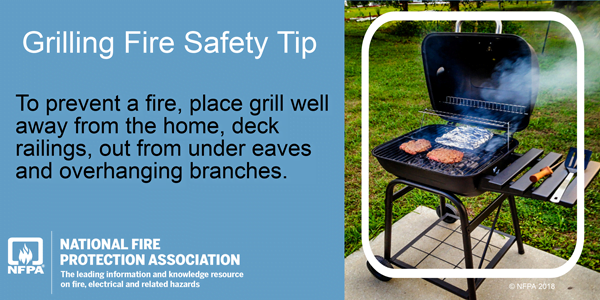
Grilling Safety Tips for Kids and Pets
Establishing a safety zone around the grill
One of the most important things you can do to prevent accidents is establishing a clear safety zone around your grill. This means creating a designated space that is off-limits to children and pets. A good rule of thumb is to make sure there’s at least a 3-foot “kid and pet-free zone” surrounding the grill area. Use physical barriers, such as a rope or a children’s fence, to create a visible and clear boundary. That way, you’ll ensure that curious little ones and playful pets are at a safe distance from hot surfaces and open flames.
Supervision is key: Always monitor children and pets
Even with a well-defined safety zone, it’s crucial to always keep an eye on kids and pets while grilling. Kids can be unpredictable and pets may be able to overcome barriers. Make sure there’s always a responsible adult present who can devote their attention to supervising children and pets. By being prepared to intervene and redirect when needed, you’ll minimize the risk of accidents happening.
Safe grilling practices to model for kids
It’s important to teach kids by example when it comes to grilling safety. Be sure to follow all recommended safety guidelines and demonstrate responsible grilling behavior. This includes:
- Always using heat-resistant gloves when handling hot tools or cooking surfaces
- Never leaving the grill unattended while it’s in use
- Turning off the propane when you’re done cooking
- Following the manufacturer’s instructions for the proper use and maintenance of your grill
By modeling these safe practices, you’ll be showing kids how to enjoy outdoor cooking without putting themselves or others in danger.
Teaching children about fire safety
It’s never too early to start teaching children about fire safety. Use your grilling sessions as opportunities to teach kids important lessons about the dangers of fire and the steps they can take in case of an emergency. Explain the concept of “stop, drop, and roll” and make sure they know where the fire extinguisher is located and how to use it. For older children, include lessons on how to safely light and extinguish fires, and the importance of treating fire with respect and caution.
Pet-proofing your grilling area
Pets can be especially prone to grilling-related accidents, as they may be attracted by the smells of cooking food or the warmth of the flames. Some steps you can take to pet-proof your grilling area include:
- Ensuring there are no loose food items or greasy spills accessible to pets
- Securing your trash or waste bins, so pets can’t knock them over or get into them
- Having a designated area for your pet (such as a secured room or pen) where they can stay safely while you grill
- Keeping pet toys and play areas away from the grill to avoid distractions and temptations
By following these safety tips, we can all enjoy the fun of cooking outdoors while still keeping our kids and pets safe and sound. Remember that vigilance and preparation are key factors in preventing grilling accidents and creating a secure environment for the whole family.
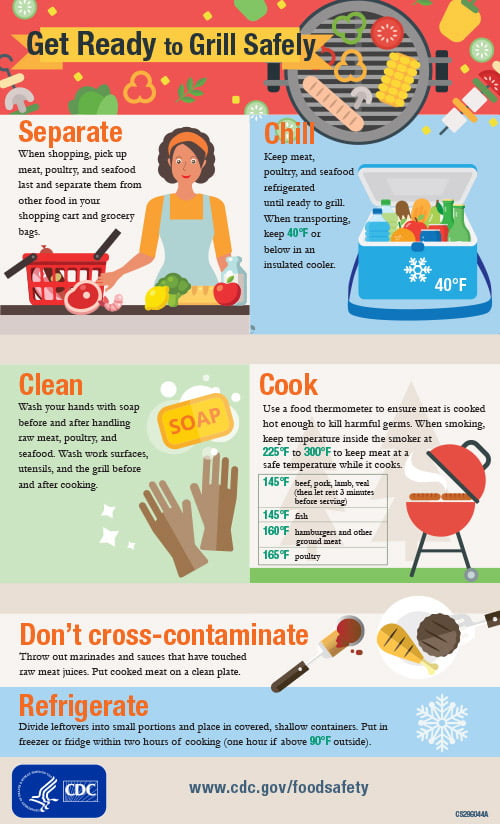
Ways to Prevent and Address Fires and Accidents
BBQ season is upon us, and we can’t wait to fire up the grill and enjoy some delicious meals with our friends and family. However, before we dive into the fun, it’s essential to brush up on our BBQ safety skills. In this section, we will cover essential tips to prevent and address common grilling dangers.
Fire Prevention: Basic Grilling Flame Control Tips
We’ve all heard the saying, “If you can’t stand the heat, get out of the kitchen.” Well, when it comes to BBQ safety, we must learn how to manage heat effectively. Here are some basic grilling flame control tips to help you avoid accidental fires:
- Keep the grill clean. Grease and fat build-up can provide more fuel for a fire. Make it a habit to scrape your grill grates after each use and clean out the grease tray regularly.
- Keep a watchful eye. Never leave your grill unattended, even for a minute!
- Create a “safe zone” around your grill. Make sure you have at least three feet of clearance on all sides of the grill to avoid accidentally setting fire to nearby objects.
- Use long-handled tools to avoid reaching over the open flame.
Remember, control is key, so always maintain proper control over your grill to prevent any accidental fires.
The Importance of Having a Fire Extinguisher Nearby
In case things get a little too hot (and not in a good way), having a fire extinguisher nearby can be a lifesaver. Make sure that you have a fire extinguisher rated for all types of fires – especially grease fires – within reach of your grilling area. And just as importantly, familiarize yourself with how to use it properly – because the last thing you want is to be fumbling around trying to figure out your extinguisher while your BBQ turns into an inferno!
Handling Grease Fires Safely and Effectively
Speaking of grease fires, they are one of the most common causes of grill accidents. But with a little knowledge, we can handle them safely and efficiently. Here are some pointers for dealing with grease fires:
- Never use water to put out a grease fire. Water can spread the fire further and make the situation even worse.
- If the fire is small and manageable, you can try to put it out using baking soda or salt.
- For more significant fires, smother the fire using a metal lid, wet towel, or fire-resistant blanket.
- And when in doubt, remember to use your trusty fire extinguisher.
What to Do in Case of a Gas Leak
We all love the convenience of gas grills, but they do come with a few extra safety concerns. One of those is the risk of a gas leak. If you ever smell gas while using your grill, take the following steps:
- Turn off the grill and the gas supply immediately.
- Ensure the area around the grill is clear of people.
- Call your local gas utility or a professional to inspect and repair the problem.
Never try to fix a gas leak yourself – this is a job for professionals.
Dealing with Minor Burns and First Aid if Accidents Occur
Hey, accidents happen. Even the most cautious among us can occasionally fall victim to a minor burn while grilling. If you or someone near the grill experiences a minor burn, follow these first aid steps:
- Remove any jewelry or tight clothing around the affected area.
- Run cool water over the burned area for about 10 minutes.
- Apply a burn cream or aloe vera gel to the burn.
- Cover the burn loosely with a sterile gauze bandage, avoiding direct pressure on the burn.
Remember, though, that these steps are for minor burns only. If you or someone around you experiences a more severe burn, seek immediate medical attention.
By following these essential BBQ safety tips, we can enjoy many fun and flavorful cookouts without the added worry of accidents. So, fire up the grill, enjoy your favorite grilled dishes, and stay safe, friends!
Frequently Asked Questions About BBQ Safety
How often should I clean my grill?
It’s important to clean your grill regularly to avoid potential fire hazards and to ensure your food cooks evenly. We recommend cleaning your grill grates every time you fire up the bbq, and giving the grill a thorough cleaning at least once every grilling season. This includes emptying the grease tray, cleaning the burners, and inspecting the hoses and connections.
What are some common grilling hazards to avoid?
Grilling can be a fun and tasty activity, but it’s important to be aware of the potential dangers. Some common grilling hazards to avoid include:
- Overcrowding the grill: Overloading the grill with too much food can cause uneven cooking and flare-ups. Be sure to leave enough space between your food to allow for proper heat distribution.
- Using the wrong tools: Make sure to use long-handled tools specifically designed for grilling to avoid burns and keep your hands a safe distance from the heat.
- Using too much lighter fluid: Excessive use of lighter fluid can lead to dangerous flare-ups. Use the recommended amount, or consider using a chimney starter instead.
- Grilling under low-hanging branches or awnings: This can pose a significant fire risk. Always set up your grill in a well-ventilated area away from any potential hazards.
Can I safely use a rusty grill?
A little bit of rust on your grill grates is generally harmless, but larger areas of rust can pose a health risk. Rust may cause the grates to break apart, which could contaminate your food. If the rust is persistent, consider replacing the grates or investing in a new grill. To prevent rust, clean your grill regularly and store it in a dry place when not in use.
What should I do if my grill catches fire?
If your grill catches fire, it’s important to act quickly. Here’s what to do:
- Stay calm: Panicking will only make the situation worse. Take a deep breath and assess the situation.
- Shut off the gas: If you’re using a gas grill, turn off the burners and the propane tank.
- Close the lid: Cutting off the oxygen supply to a fire can help put it out. Close the grill lid if it’s safe to do so.
- Use a fire extinguisher: If the fire is growing and you have access to a fire extinguisher, use it to put out the flames. A Class B fire extinguisher is most effective for propane fires.
- Call 911: If you can’t contain the fire, call 911 immediately and keep a safe distance from the grill.
How to safely store my grill when not in use?
Proper storage of your grill is essential to ensure its longevity and to avoid potential hazards. Follow these steps to safely store your grill:
- Clean your grill: Give your grill a thorough cleaning before storing it. This will prevent grease build-up, which can attract pests and cause flare-ups when you next use the grill.
- Disconnect the propane tank: If you’re using a gas grill, disconnect the propane tank and store it a safe distance away from the grill.
- Cover it: Invest in a high-quality grill cover to protect your grill from the elements. Make sure the cover fits snugly and is made of waterproof, breathable fabric.
- Store indoors: If possible, store your grill in a dry, well-ventilated area such as a garage or shed. If you must store it outside, choose a flat, stable surface and secure the grill cover with bungee cords or straps to prevent it from blowing away.
By following these helpful tips and staying vigilant about safety, we can all enjoy a safe and delicious grilling season!
Amazon and the Amazon logo are trademarks of Amazon.com, Inc, or its affiliates.
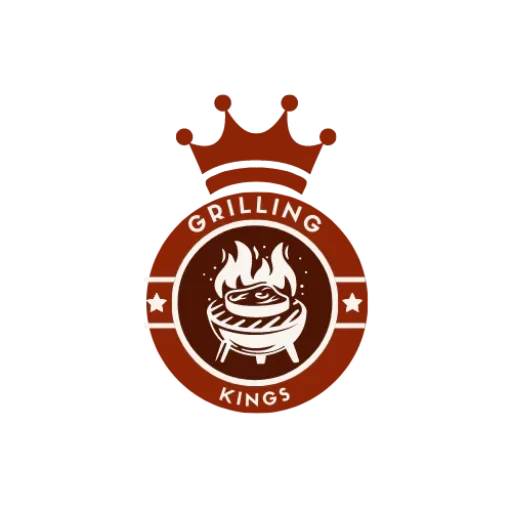
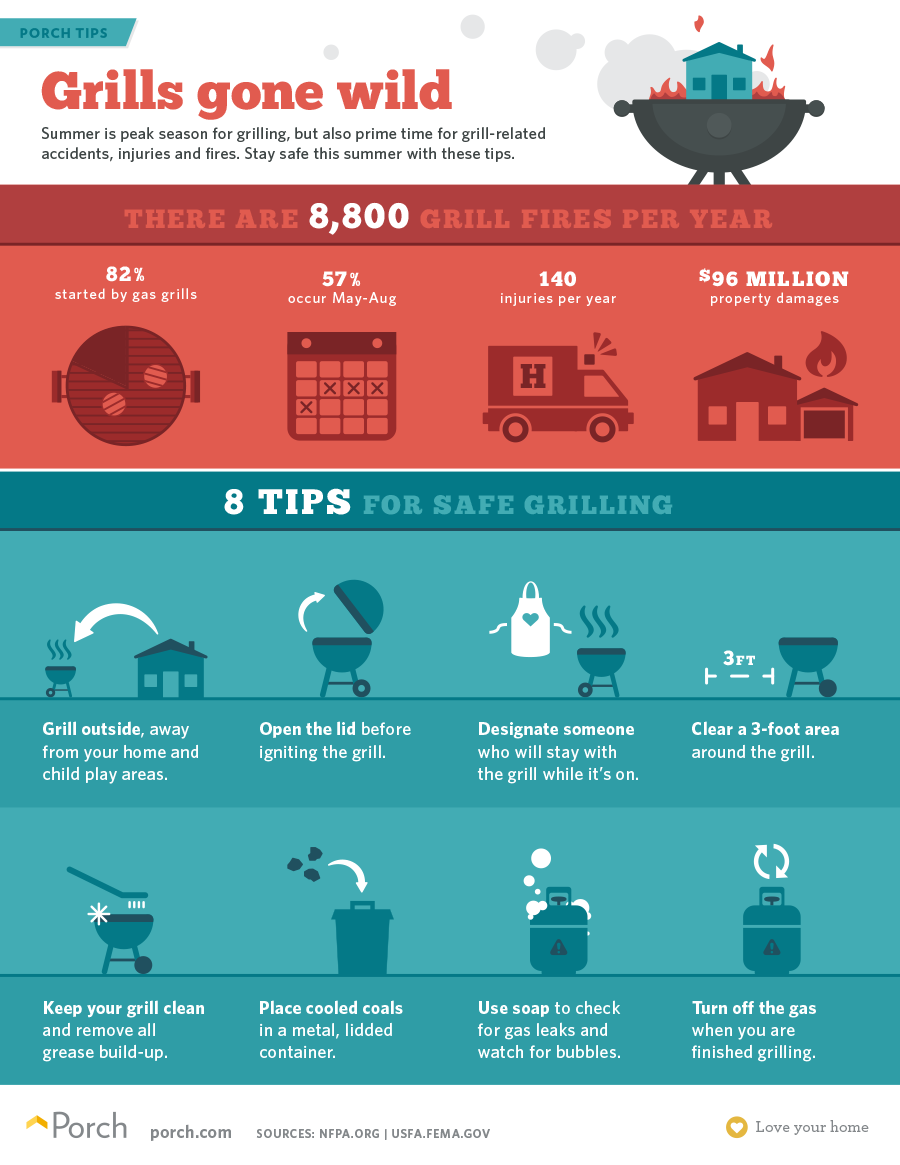
[…] way to cook food, but it’s important to be aware of the potential health risks. By taking care to grill safely and making informed choices about the meat and other foods you cook, you can enjoy all the benefits […]